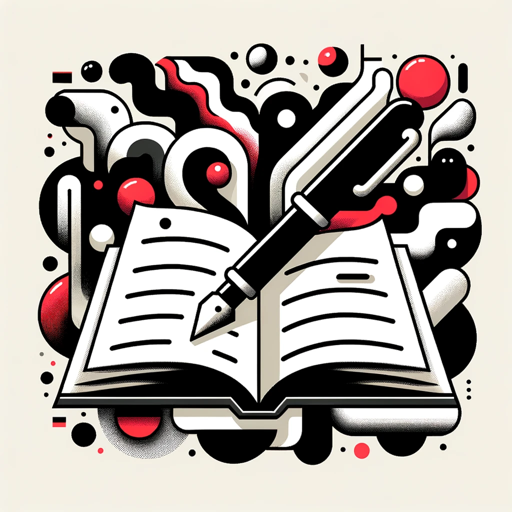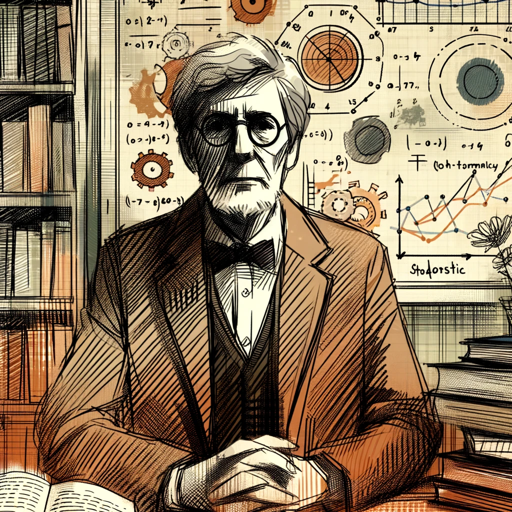Fiction and Nonfiction Book Writing-AI-driven book writing tool
AI-Powered Writing, Your Story Perfected
Help me outline my new fantasy novel.
Create a character for my mystery story.
Assist in developing the plot for my sci-fi book.
Suggest dialogue for a dramatic scene.
Assist with cover design
Help with my book research
Related Tools
Load More
Book Writing Assistant
Guides users in structuring & writing books. Give me information on the book you want to write and we can get started!

Fiction Writing
Comprehensive fiction writing aid with diverse tools. Aids in both creative and technical aspects of fiction writing.

Write a Book
Create your own book with the help of chat GPT4

I-Write Full Books
Writes complete novels and books in any style or language, with professional tone and detail. You can now download your book and monetize your writing! ~ By AiWebTools.Ai

Write a Nonfiction Book
Guides you on how to write a book in your own style

FictionAI
Ready, Set, Write (v.1.1.0)
20.0 / 5 (200 votes)
Introduction to Fiction and Nonfiction Book Writing
Fiction and Nonfiction Book Writing is a specialized tool designed to assist authors, both aspiring and experienced, in the complex process of creating, structuring, and refining their literary works. The purpose of this tool is to provide guidance and support throughout the entire writing process, from conceptualizing ideas to developing characters, crafting plots, and organizing content into cohesive narratives. This tool is not just a word processor or a generic writing assistant; it’s tailored specifically for the nuanced demands of book writing, whether the project is a novel, memoir, academic text, or any other form of long-form writing. For instance, consider an author working on a historical fiction novel. They may have a rough idea of the setting and characters but struggle to develop a compelling plot that intertwines historical events with fictional elements. The Fiction and Nonfiction Book Writing tool could offer insights into structuring the narrative, suggest ways to blend fact with fiction seamlessly, and even help with research on historical accuracy. Another scenario could involve a writer creating a self-help book; the tool could assist in organizing chapters to ensure a logical flow of ideas, provide tips on engaging readers, and suggest methods to make the content more impactful.

Main Functions of Fiction and Nonfiction Book Writing
Plot and Storyline Development
Example
A mystery novel writer needs to create a complex plot with multiple twists and turns. The tool can help by generating various plot outlines, suggesting where to place clues and red herrings, and ensuring that the narrative maintains suspense throughout.
Scenario
An author is struggling to maintain consistency in a story where multiple characters have intertwining stories. The tool provides a plot diagram that visually maps out each character's journey, helping the author to see where to add tension and resolve conflicts.
Character Creation and Development
Example
A fantasy writer is developing a new world with diverse characters. The tool can assist in fleshing out these characters by providing detailed character profiles, including backstory, personality traits, and motivations.
Scenario
In a dystopian novel, the protagonist's development is crucial. The tool suggests ways to evolve the character throughout the story, ensuring their growth aligns with the overarching themes of the novel.
Chapter Structuring and Content Organization
Example
A nonfiction author is writing a book on leadership and needs to organize the content in a way that builds logically and keeps readers engaged. The tool can help by outlining the key points for each chapter, suggesting subheadings, and ensuring a smooth progression from one chapter to the next.
Scenario
A memoirist has written multiple anecdotes but is unsure how to structure them chronologically and thematically. The tool helps arrange the anecdotes into a coherent narrative that enhances the emotional impact of the memoir.
Ideal Users of Fiction and Nonfiction Book Writing
Aspiring Authors
These are individuals who have a desire to write a book but may not have the experience or knowledge to navigate the complexities of book writing. They benefit from the tool’s ability to provide structured guidance, from idea generation to final edits. For example, an aspiring author might have a concept for a fantasy novel but lacks the skills to build a coherent plot. The tool can guide them step by step, making the daunting task of writing a book more manageable.
Experienced Writers
These users have written books before and are familiar with the writing process, but they might seek more advanced help with specific aspects of their projects. They could use the tool to refine their work, explore new narrative techniques, or overcome writer’s block. For instance, a seasoned novelist might use the tool to explore alternative plot endings or to deepen the psychological complexity of their characters.

How to Use Fiction and Nonfiction Book Writing Tool
Visit the Website
Visit aichatonline.org for a free trial without login. No need for ChatGPT Plus to access the tool's features.
Define Your Writing Goals
Identify whether you're working on fiction or nonfiction. Determine the structure, such as chapters, plots, or specific topics to cover.
Engage with the Tool
Input your ideas, concepts, or outlines. Use the tool to refine plot development, character creation, or to organize your nonfiction topics.
Iterate and Refine
Use the tool's feedback and suggestions to enhance your writing. Make adjustments to structure, tone, and content as needed.
Export or Save Your Work
Once satisfied, export your work or save it within the tool for future edits. Ensure all elements are polished before finalizing.
Try other advanced and practical GPTs
Thumbnails
AI-powered custom thumbnails in seconds

Positive News Messenger
Discover positive news powered by AI

空き家の問題解決
AI-powered solutions for vacant properties.
"Correlation isn't Causation" - A causal explainer
AI-powered causal analysis for your research

英和翻訳H
AI-powered precision for scientific translations

Novel Character generator | Personaje de novela
AI-powered character creation for novelists

Presentation Generator
AI-Powered Presentation Creation Tool

ChromeExtensionWizard
AI-powered Chrome Extensions made easy.

A股游资分析
AI-powered financial insights for smart investments

AI Doctor
AI-powered Symptom Analysis Tool

Stock Analyst
AI-Powered Stock Investment Insights
BJJ Coach AI
AI-powered BJJ coaching and advice.

- Character Creation
- Plot Development
- Content Refinement
- Idea Organization
- Nonfiction Structure
Frequently Asked Questions about Fiction and Nonfiction Book Writing Tool
Can I use this tool for both fiction and nonfiction projects?
Yes, the tool is designed to support both fiction and nonfiction writing. It helps with plot development, character creation, and organizing ideas for fiction, while also offering structured guidance for nonfiction topics.
Do I need prior writing experience to use this tool effectively?
No, this tool is suitable for both beginners and experienced writers. It provides intuitive guidance and suggestions, making it easier to create structured and compelling narratives or nonfiction content.
How does the tool enhance my writing process?
The tool offers detailed feedback, helps with structuring content, and suggests improvements. It can assist in refining plot details, developing characters, or organizing nonfiction ideas, making your writing more coherent and engaging.
Can I collaborate with others using this tool?
Currently, the tool is designed for individual use, but you can share your work with others by exporting it. Collaborative features may be added in future updates.
Is my work saved automatically?
Yes, the tool has an auto-save feature that ensures your work is saved as you progress. You can also manually save or export your work at any stage.